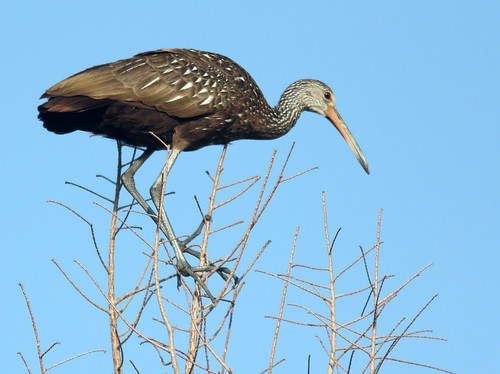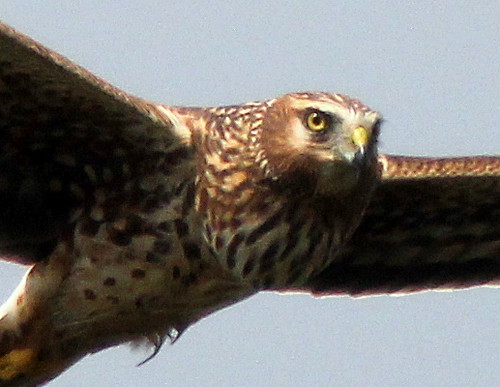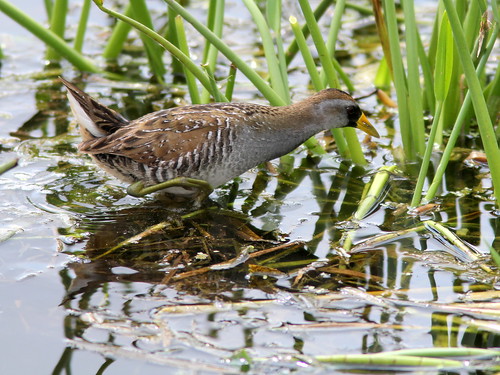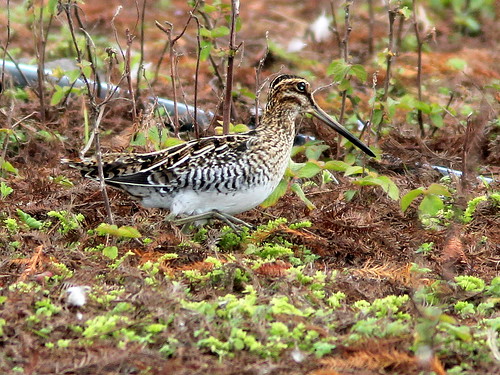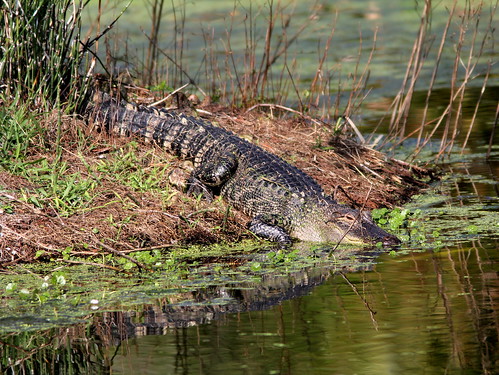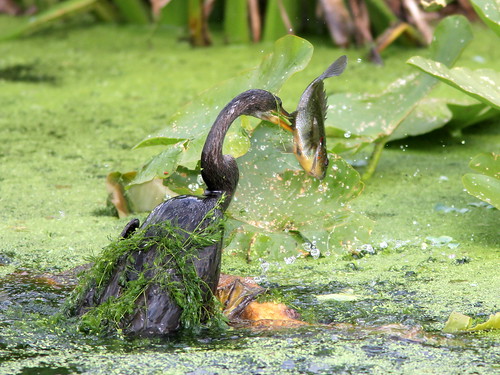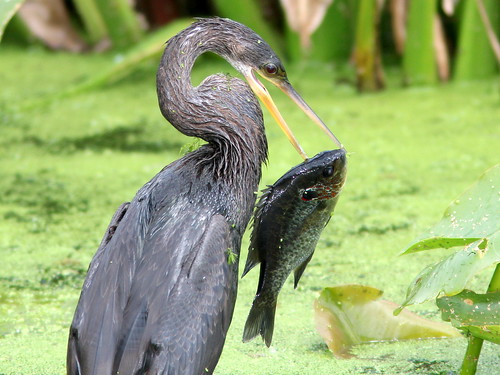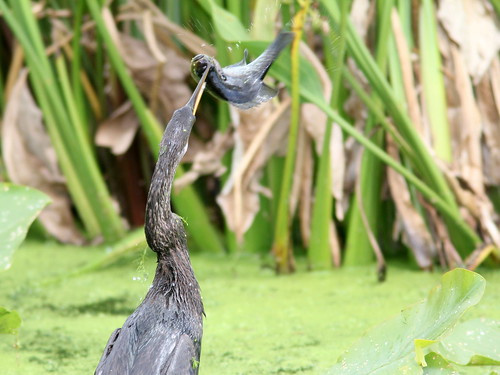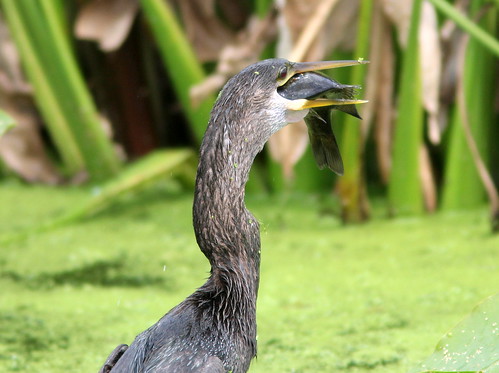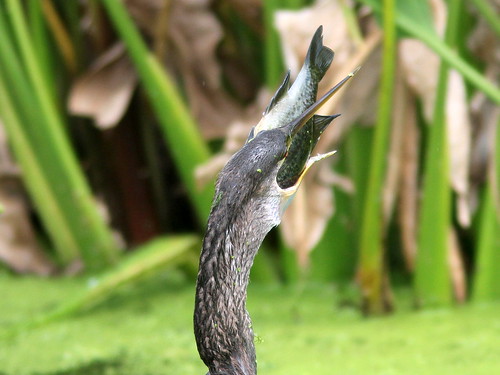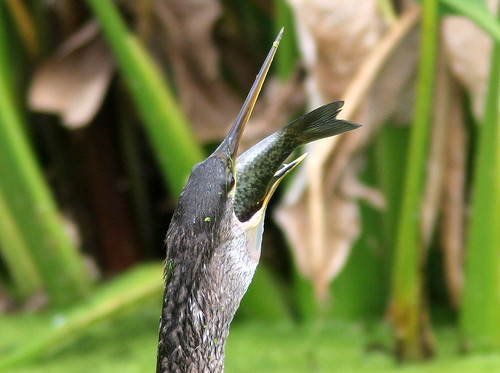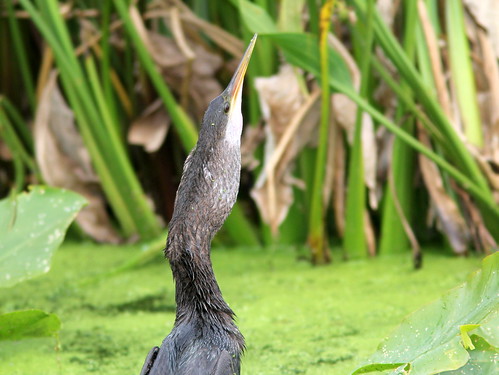Posted by: Ken @ 11:28 am
No visitor to South Florida who likes birds, or even has a marginal interest in the natural world should miss walking the boardwalk at Green Cay Wetlands, located in suburban Boynton Beach, just off Florida’s Turnpike in western Palm Beach County.
Mary Lou and I visited Green Cay the weekend before last, and were thrilled by the abundance of water birds. We arrived around 8:30 AM on a Sunday, and the large parking lot was already 3/4 full. Most of the visitors were older people decked out in exercise clothing. There were also many families with small children. I’ll admit that I did not relish the idea of joining such a large crowd, but as it turned out, they contributed greatly to our enjoyment. Except for the few power walkers who rushed through and brusquely pushed folks out of their way, everyone seemed to be having a fabulous time.
An Anhinga looked almost like a totem on a pole, silhouetted against the morning sun:
Soon after we entered, we were treated to the sight of a Limpkin perching 40-50 feet high, atop a bare Pond Cypress. We had never before seen one sit so high up:
A Northern Harrier with an owl-like face and a full crop eyed me as it flew over:
In an earlier blog (White Waders 3, Herps 0) I posted shots that I had taken at Green Cay, of an ibis subduing a water snake that it had caught, and an egret eating a Green Anole. All I had to do was point my long lens somewhere, and a small crowd gathered immediately, trying to see what I was watching. It reminded me of the traffic jams at Yellowstone National Park that could be started by anyone who pulled an RV off the road and began staring out into the distance.
Passers-by usually expressed a genuine interest in learning the identity of the many birds– herons, ibises, Limpkins, ducks, hawks, grebes, moorhens… They asked about what they ate, whether they nested there and where and when.
The smaller brown birds, such as this Sora, interested them a bit less, but stimulated comments that begged for my intervention, such as: “Look– it’s some kind of pigeon…”
…or, upon seeing this fuzzy-looking Pied-billed Grebe up close,”Look at the cute little baby duck!”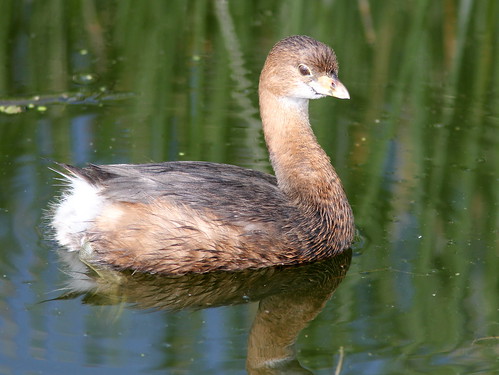
It was very difficult to show people this Wilson’s Snipe on a small island across the water, as it often blended into the vegetation before my very eyes, and when they saw it, most wondered why we bothered to look at it:
A big attraction was this large alligator basking on another island:
Unfortunately, Mary Lou missed the best show, as she had walked on ahead of me as we were exiting the wetlands. Out of the corner of my eye, I saw what looked like a fish being held up on a stick like a flag.
It was a fish, alright, but the “stick” was the neck of an Anhinga: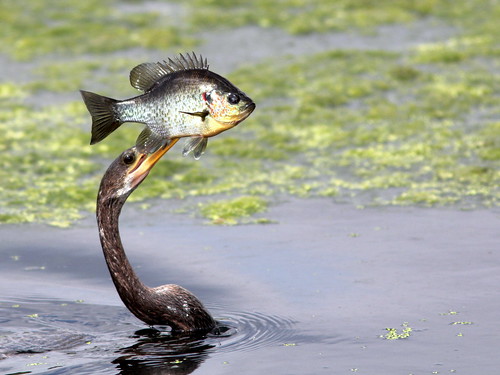
I raised my camera and took a series of photos, all the while answering questions from the crowd of people that quickly gathered to watch the show. I pointed out the the fish had actually been speared by the long sharp bill of the Anhinga, and that the bird would likely go to the shore before trying to subdue the fish before eating it.
The Anhinga complied by swimming to a half-submerged log, and displacing several turtles that had been sunning there. Strands of algae and duckweed clung to her back as she clambered up on the log with the fish firmly in her grasp:
Showing no mercy, the Anhinga began pounding the fish’s head on the log:
The fish struggled vigorously at first, shaking water drops all around, until it appeared to lose much of its fight. At this point, the Anhinga flipped it up into the air, intending to catch it headfirst before swallowing it. The fish had other ideas, and it slipped from the bird’s grasp as it tried to catch it coming down.
The Anhinga promptly disappeared under water and, within a few seconds returned with its prize, now speared near its head and looking badly battered:
Finally, the Anhinga sensed that it was safe to flip the fish up in the air one last time:
The Anhinga caught the fish head first, and people in the crowd exclaimed in disbelief that such a large fish could ever fit down the bird’s throat:
For a long moment it appeared that the fish had stuck in its throat, and the bird would choke to death:
Gradually, the fish slithered out of sight:
The show got even more exciting as the spectators watched the bird’s neck expand to accommodate its meal: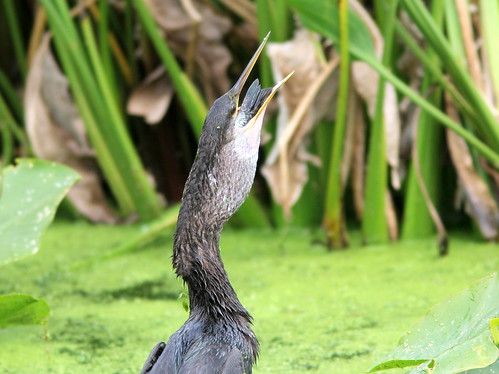
There was a round of applause as the Anhinga completed its act:













